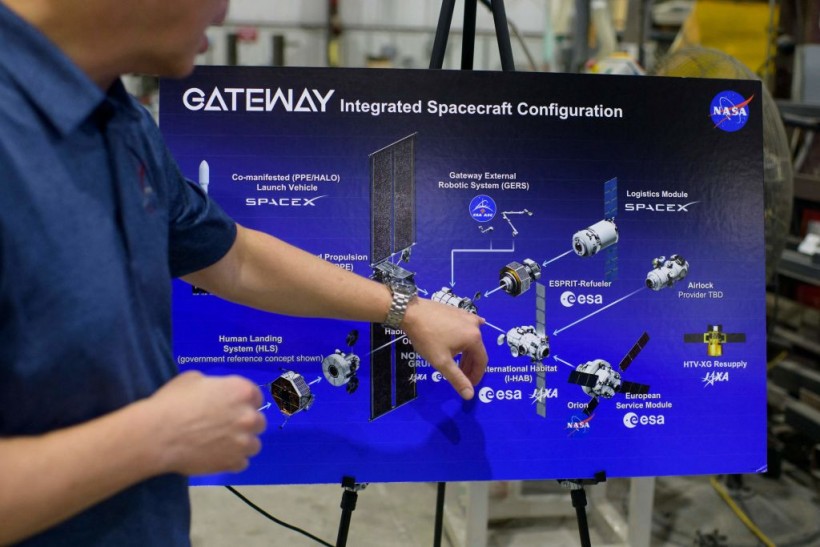(Photo : Photo by MARK FELIX/AFP /AFP via Getty Images)
According to experts on the field, earth is now in the third season of the Sun's 11-year solar activity.
Low earth orbital observatories are now feeling the impact and experts are now worrying of what is yet to occur, since the latest phase is showing to be more powerful than analysts predicted.
Issue on Solar Storms
Such issues were highlighted by a committee of weather forecasting specialists at the Secure World Foundation's just ended 36th Small Satellite Colloquium, wherein Tzu-Wei Fang, an aerospace specialist at NOAA's Space Weather Prediction Center, gave a grim forecast for the upcoming multiple seasons on August 8, Gizmodo recently reported.
In his statement, Fang claimed as per SpaceNews that whatever it is that humanity have been through in the last 2 years does not really count and what researchers learnt in the last two years will hardly be relevant within next half decade.
Certainly, minimal Orbital altitude has been exceptionally turbulent recently, as the Sun reaches its most recent thermal peak which is the time marked by increasing solar output.
Fang and her associates cautioned that tiny spacecraft are especially susceptible to the succeeding geomagnetic flares, and that smallsat controllers aren't reacting or adjusting quickly enough to what is a common occurrence in the Sun's service life. Whereas the 11-year solar cycle is expected, the recovery phase, which started in December 2019, has been more exciting than expected.
Variations in the magnetosphere of the Sun impact the prevalence of sunspot activity, which affects the incidence of solar storms. These outbursts emit high-energy ionizing energy into the planetary system, some of which reaches Planet's surface.
Researchers witness this in the appearance of spectacular night skies, yet often in obstructive cosmic radiation, which causes the stratosphere to spread, leading to increased drag for observatories in orbit Around earth and hastened planetary degradation.
This has obviously been having an impact. A coronal mass ejection caused the loss of 49 Starlink satellites by SpaceX in February. The observatories only had awhile back been initiated and experts are aiming to find their operations and maintenance trajectories, however the frequency and intensity of a coronal mass ejection exacerbated by a flare merely due to the February 3 unveiling induced earth's atmosphere drag to huge sums to 50% greater than during flight tests, as per SpaceX.
However, as Fang sadly stated at the event, that tempest was essentially a little storm in the repertoire. As the SWPC and SpaceX are collaborating jointly to investigate the occurrence, with a report on the issue due soon.
Also read: Potentially Hazardous Asteroid the Size of a Blue Whale will Zip Through Earth's Orbit on Friday
Satellite Operators Worried
The increase in thermal energy may indirectly harmed LightSail2, a Planetary Society mission that sailed into orbit in 2019. The spacecraft, with its 344-square-foot photovoltaic sail, is now projected to explode on impact as a consequence of enhanced natural variability this year, Journal Break updated.
Some other effect of the increased drag is that observatories and space junk shift planetary locations, complicating the extremely arduous task of watching these particles and preventing probable catastrophes.
Excessive solar output can also damage space - based equipment and endanger scientists operating beyond the International Space Station.
The present sunspot minimum is predicted to reach its maximum by the course of the decade, when solar radiation will be significantly greater. Speakers at the summit are concerned that smallsats made of off-the-shelf equipment would be burned by solar photovoltaic showers since these devices were not designed to resist this degree of danger.
According to Flipboard, experts' suggestion to smallsat operator and automakers is to utilize radioactive material parts on key subsystems and off-the-shelf hardware on other circuits that can survive frequent interruptions.
Related article: New Study Reveals Oklahoma 'Gigantic Jet' Could be Earth's Most Powerful Lightning Bolt in History
© 2024 NatureWorldNews.com All rights reserved. Do not reproduce without permission.




![Climate Change is Reducing Dust Levels Worldwide as Arctic Temperature Warms [Study]](https://1471793142.rsc.cdn77.org/data/thumbs/full/70320/280/157/50/40/climate-change-is-reducing-dust-levels-worldwide-as-arctic-temperature-warms-study.jpg)

